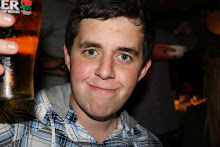Preliminary Brief: Film and edit a character opening a door, crossing a room and sitting down in a chair opposite another character. A couple of lines of dialogue must then exchange between characters & match on action, shot/reverse shot and the 180-degree rule should be demonstrated.
Main Task: The titles and opening of a new fiction film, to last a maximum of two minutes (all video and audio material must be original, produced by candidates, with the exception of music or audio effects from a copyright-free source)
Looking back at the Prelim task I can see how much my knowledge has advanced and how comfortable I now feel around the Media technology. Before starting the Prelim task I had only used a web cam to film and that was only to a few minutes of filming. At first the Prelim task looked to be a big challenge for most of, little did we know that this was the easy part. For our Prelim task we was asked to film and edit a sequence were a character would enter a room and sit down and have a conversation with another character. They then needed to leave the room and exit through the door. The sequence was simple but it was the rules we needed to follow that were difficult. We were given 3 rules which we had to make sure we created our film around , they were the 180-degree rule , shot reverse shot and match on action. We needed to show that we understood theses rules and could apply them well. We also needed to get use the equipment which was alien to most of us. This was one of the biggest learning curves. The information we gained by using the equipment would be vital to our main project.
There was also many problems which occurred during the prelim task which helped us understand filming more. These problems included
• Sound interference
• People walking past the camera during filming
• Moving the camera from different locations
• Operating the equipment correctly and efficiently
• Using the editing equipment
Now I look back at these problems I cans see how I have grown form them and can compare them to what I done different in the main task. If you take sound interference as an example , when we was filming our main task we made sure we chose a efficient location which would cause as less sound interference as possible. For us this was the media departments control room. It was small enough that the sound didn't echo and that the boom could not pick up sounds from outside. I do not believe that we would have been able to understand why we had to do this if it was not for the prelim task. By having the problems with the sound it made sure that we didn't make the same mistake twice
Another comparison would be the difference in shots in the prelim task and the main task. I think this was due to the amount of time we was given to practice different shots and see which ones we thought would be good to use. Obviously we had been taught the basic shots before but by being able to use the camera we were able to experiment with , low angle , high angle, behind the shoulder , tracking , zooming in and zooming out at different speeds. This is were we got our idea for the slow tracking movement for our main ask. Also I had mentioned earlier the 3 rules were like second nature to me due to practicing them in the Prelim task. As the director I was constantly thing about the position of the camera and I made sure none of the rules were broken. Overall when it comes to camera work i believe that I have excelled greatly and I now fill comfortable either behind it or directing it. This is due to constant practice with it (Especially in the prelim task) and the opportunity to be given the Independence with it to make our opening sequence.
Another big learning curve for me was the editing software. I had always seen myself as someone who was able to edit a piece of media and to do it well , I soon learned that it was harder then I first thought. The editing software we use is called Adobe Premier Pro and is simple and effective one you learn how to use it. After filming for our prelim task we needed to transfer the rushed onto the computer and digitize to them. I had no idea how to do this and so this was something new for me. I learnt how to connect a fire wire and what its purpose was. I then learned how to digitize to the editing software. Once this was done we needed to learn how to create the timeline and which steps needed to be taken to make sure that we didn't edit wrong. This was the most important part for me as I believe that when you go to edit it can either make or break your film. This is why I learnt all i needed to know in the Prelim task so I could transfer my skills to my main task. Learning such things as how to fade and add a soundtrack was vital.
In all I believe that I have come a long way since the prelim task and am happy with my progress. From learning the basics to creating an advanced piece of work I have not stopped learning.
Subscribe to:
Post Comments (Atom)

No comments:
Post a Comment